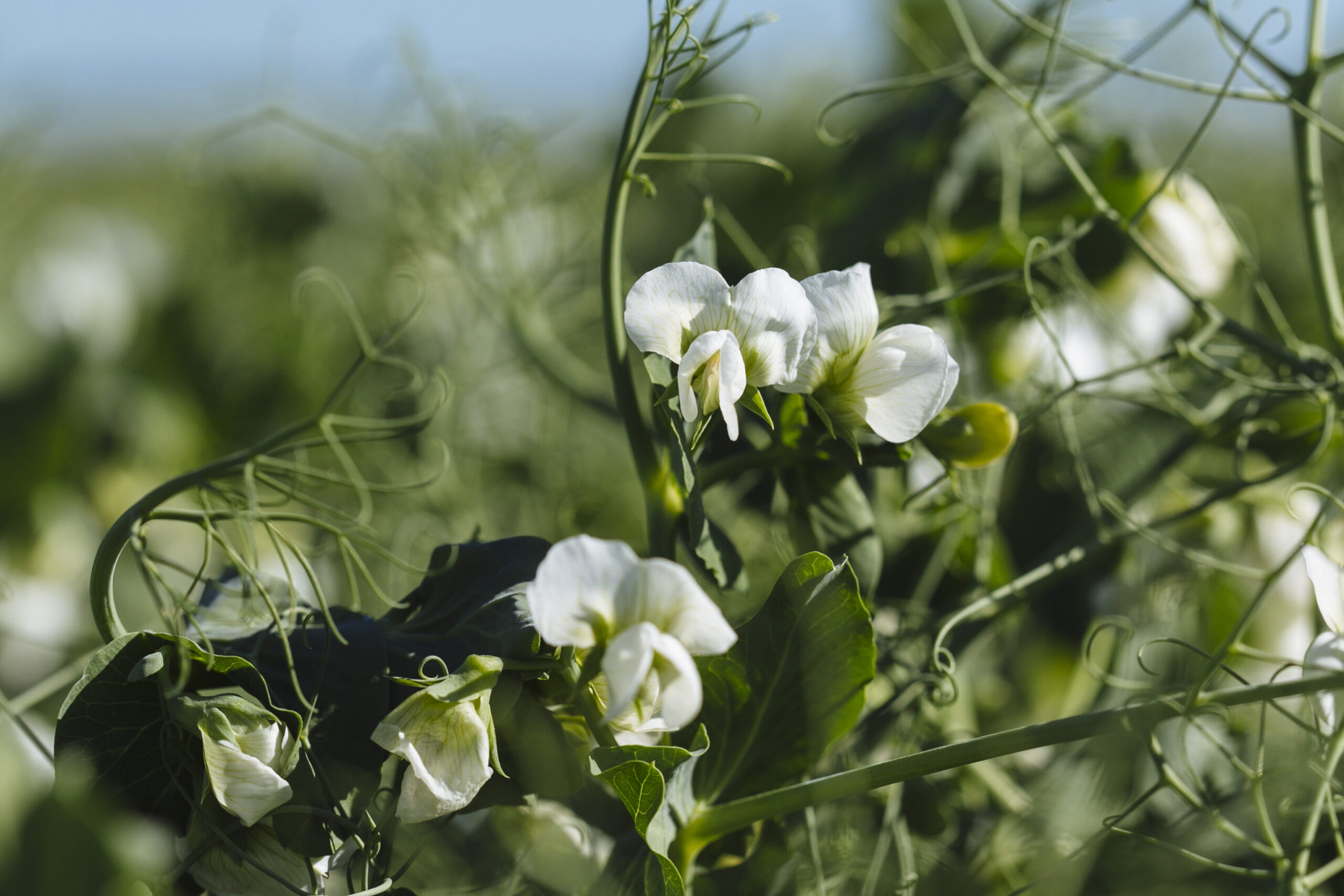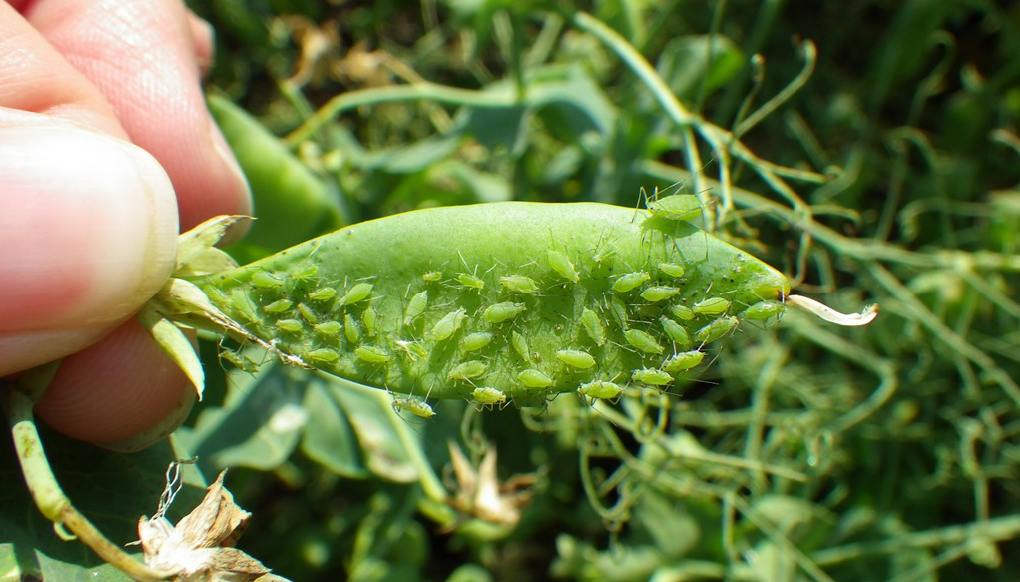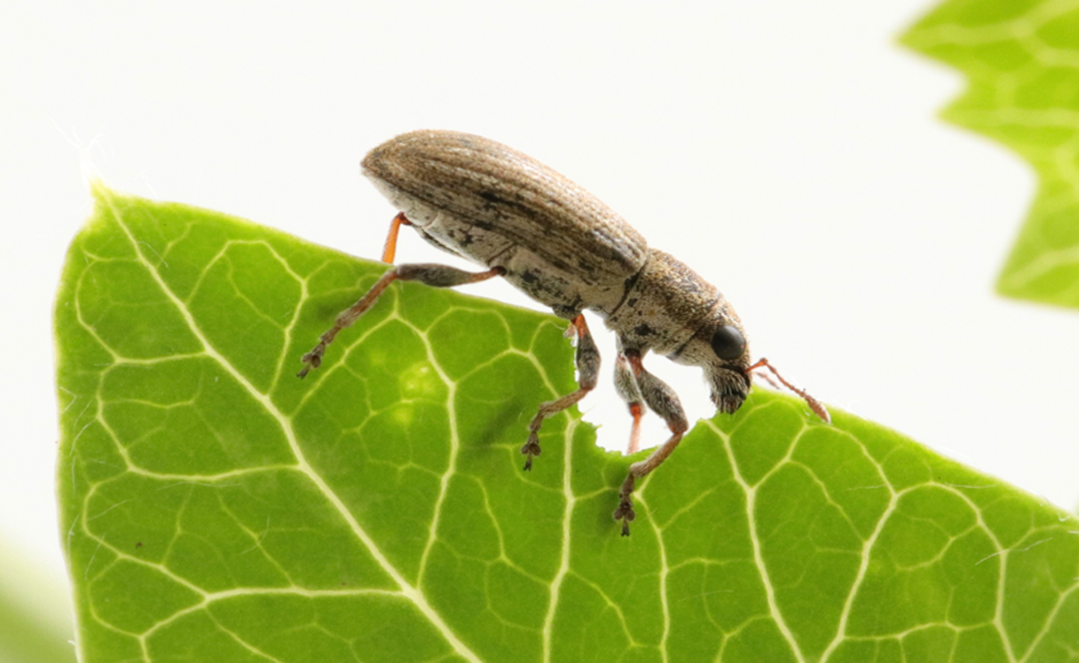Weed Management
An integrated approach to weed control in peas is essential for fostering a successful crop. Peas are generally not competitive against weeds, so it is necessary to control weeds both pre-emergence and in-season, as well as in the year before growing a pea crop.
Sourcing weed-free seeds, planting the crop at sufficient seeding rates and depth, implementing thoughtful crop rotations, and using herbicides appropriately will help to control weeds and ensure a good pea crop.
Applying pre-harvest glyphosate in the previous year’s crop, fall herbicide application for winter annuals, and selecting a field with low weed pressure are all good weed management practices in peas. A pre-seed or pre-emergence herbicide application is recommended in the spring for early-season weed control and control of weeds for which no in-crop weed control options are available for peas. Avoid areas where perennial weeds have been a known issue or where herbicides with re-cropping restrictions have been applied.
Herbicide-Resistant Weeds
Herbicide-resistant weeds can have a profound impact on the success of pea crops because peas offer minimal competition against weeds, and there are limited herbicide options available for safe use in pea crops.
Herbicide-resistant weeds that pose a problem for pea growers include Group 2-resistant kochia, wild mustard, and cleavers, as well as Group 1 and Group 2-resistant wild oats.
To slow the development of herbicide resistance, it is advisable to rotate herbicides that use different modes of action. Applying mixtures of herbicides with multiple modes of action simultaneously, where products are active against the same weeds of concern, is one of the most effective means to slow the development of herbicide resistance.
In pea rotations, limiting the use of Group 1 and Group 2 weed control products and rotating herbicide groups away from these products, especially in rotational years when peas are not grown, can help prevent or manage resistant weeds.
Timing of Application
The timing of herbicide application is crucial for peas. Earlier herbicide application means weeds are smaller and easier to control, and the crop is less susceptible to injury.
Research from Alberta showed that pea yields were significantly higher and more consistent when herbicides were applied at the second node stage compared to the eighth node stage. Research conducted at Agriculture and Agri-Food Canada (AAFC) and Agri-ARM sites in Saskatchewan also demonstrated the importance of early weed control in peas. Annual weeds were removed from pea crops at intervals of one, two, three, and four weeks after crop emergence. Pea yields did not decline after one week, fell 7% after two weeks, 12% after three weeks, and 26% after four weeks.
Minimizing Crop Injury to Herbicides
During periods of crop stress (heat, drought, frost, or after land rolling), a crop’s resilience to herbicide application may be reduced. Risks of crop injury can be mitigated by waiting approximately four days after a crop stress occurs before applying herbicides and by using crop protection products in the early morning or evening when the sun is less intense. It is also essential to follow label recommendations regarding water volumes and application rates.
Additionally, peas can be easily damaged by certain herbicides registered for use on other crops. Growers should ensure that the herbicides they choose are compatible with the intended crop and are aware of their field histories. Sprayer tanks should be thoroughly cleaned before applying any crop protection product to peas, and care should be taken to avoid herbicide drift from other fields.
Alternatives to Chemical Weed Control
Non-herbicide weed control options, such as cultural or mechanical methods, may also be considered.
Tillage or rod-weeding may effectively control some weed species, such as kochia, while having the opposite effect on others by disturbing the weed seed bank and encouraging germination. In low and no-till managed systems, spot-tilling may be effective where weed patches are identified.
Harrowing between seeding and emergence of the pea crop can target newly emerged weed seedlings that escaped previous tillage or chemical control operations. Harrowing should be avoided during crop emergence and for several days afterwards, to permit effective rooting and stand establishment.
According to research conducted at the AAFC Research Station in Scott, Sask., peas are somewhat tolerant to post-emergence harrowing. If this practice is implemented, ensure conditions are warm and dry to improve weed control and prevent the spread of diseases. Higher seeding rates should also be used to offset plant losses due to harrowing.
Related Resources
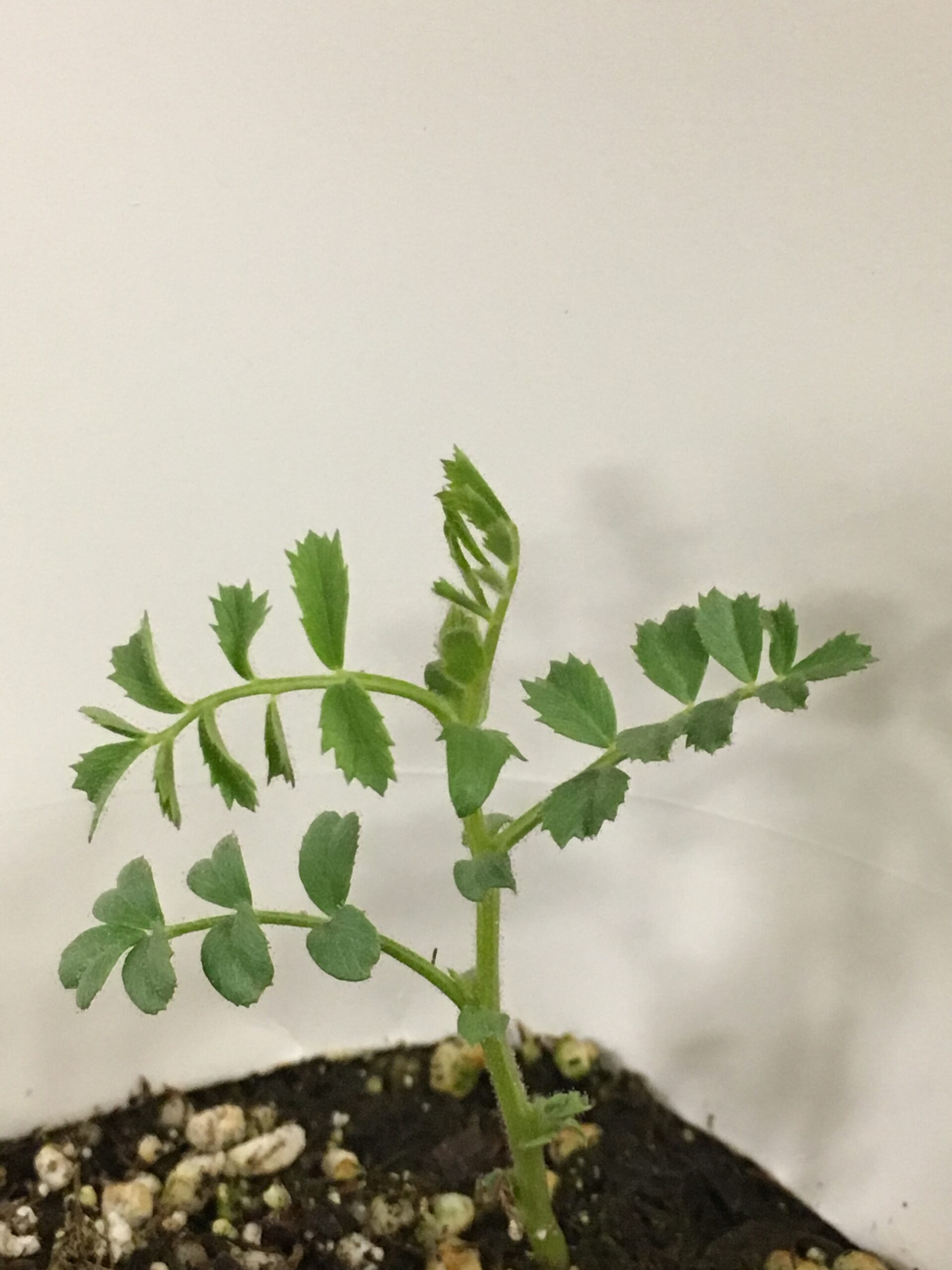
Staging Pulses for Herbicide Applications In-Crop

Critical Period of Weed Control in Pulses
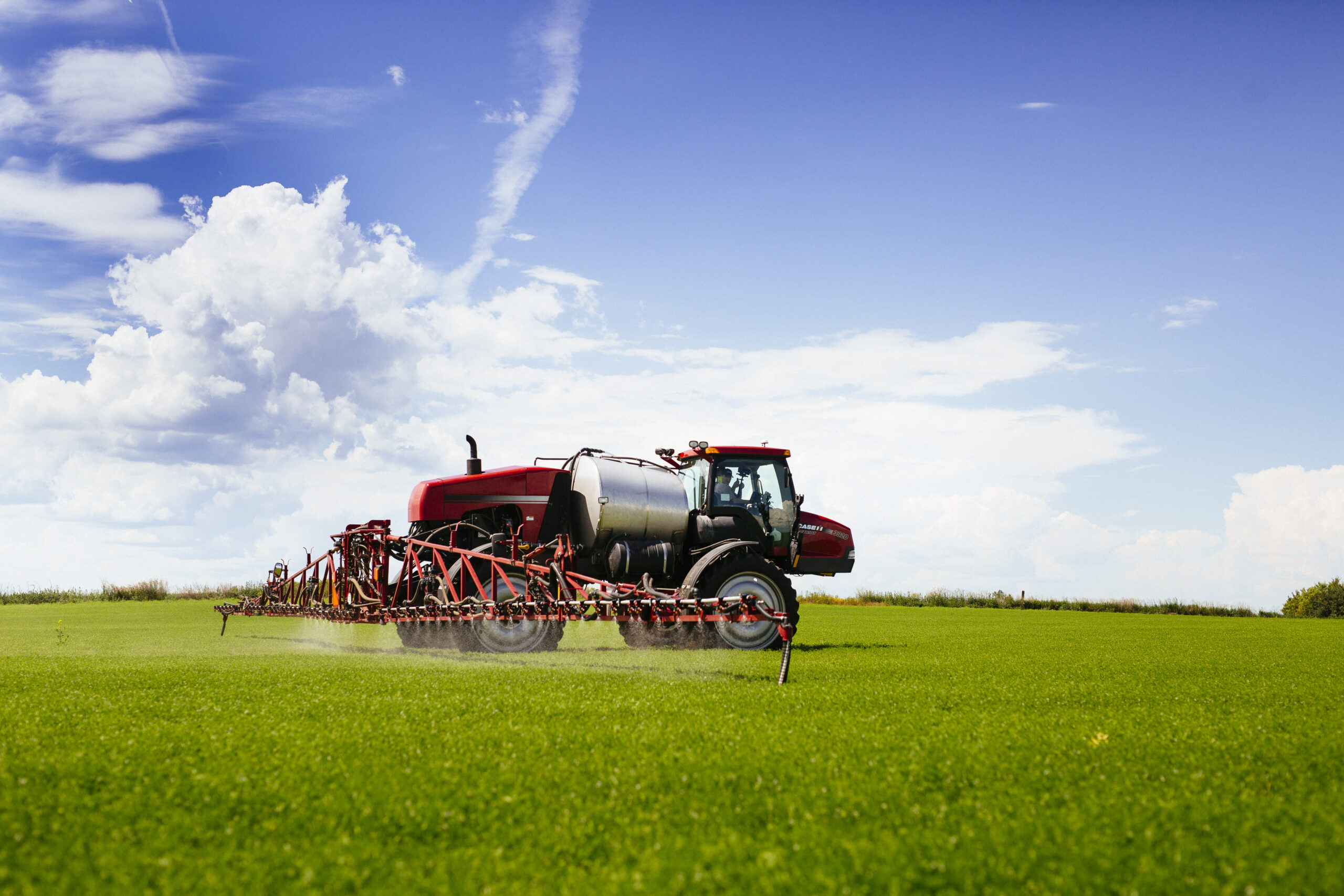
Post-Emergent Herbicide Options for Pulse Crops

Herbicide Injury in Pulse Crops
Disease Management
Pea crops are susceptible to several diseases that can reduce yield and quality. Seed-borne, soil-borne, and residue-borne diseases can be minimized through preventative management. Disease prevention recommendations include:
- Using effective crop rotations:
- Plant peas only once every four years in the same field.
- Using the best seed available:
- A seed test will indicate the presence of seed-borne diseases.
- Using registered fungicide seed treatments when warranted, especially if seeding early into cool, wet soils.
- Using disease-resistant seed varieties.
- Seeding early.
- Consistently monitoring fields for diseases.
This fungal disease is a common and economically significant foliar disease of peas in Saskatchewan. It is one of three Ascochyta diseases often referred to as the “Ascochyta disease complex.” The other fungi involved in this complex are Ascochyta pinodella, causing foot rot, and Ascochyta pisi, causing leaf and pod spot.
In Saskatchewan, Ascochyta pinodes is the most prevalent species in the disease complex. The sexual stage of this species is Mycosphaerella pinodes, which is the reason this disease is also known as Mycosphaerella blight. Losses attributed to this disease have been reported as high as 80%.
Most Ascochyta symptoms observed in the field are those of mycosphaerella blight. Early symptoms appear as small, purplish-brown, irregularly shaped spots on the lower leaves, stems, and pods. These spots grow together and spread up the plant. Infection at the base of the plant may lead to girdling of the stem near the soil line, which is known as foot rot. Girdling weakens the stem and often results in premature lodging. The impact on yield depends on the timing of initial infection and weather conditions. Early infection followed by wet conditions may lead to higher potential losses.
Infected crop residue is the primary source of infection. Infected seed is not considered a significant source of inoculum but may play a role in introducing the disease to new areas. Mycosphaerella pinodes is the only Ascochyta species that forms a sexual spore stage. Those spores result in airborne ascospores, allowing transmission of the disease over longer distances. Additionally, the fungus can survive in the soil for extended periods. This means that extended crop rotations do not guarantee low levels of this disease, although it remains an important component of disease management. No commercial pea varieties are resistant to mycosphaerella blight, but some are more tolerant than others.
Scouting early and monitoring the disease is critical for control. If symptoms move upward in the plant canopy beyond the lower third of the plant, a fungicide application may be warranted. Maximum efficacy occurs if the fungicide is applied at early flowering. Thorough penetration of the canopy with good leaf coverage is essential. Fungicides prevent infection of healthy green plant material but will not repair damage that has already occurred. The timing of infection, the yield potential of the crop, weather conditions, and the value of the harvested seed will all influence the economics of fungicide application.
Several fungi, including Pythium, Rhizoctonia, Botrytis, and Fusarium species, are responsible for these diseases. These soil-borne fungi can attack any part of the root system, extending up to a short distance above the soil surface, and can infect at any time between germination and maturity. These fungi are common in the soil, and infection is more likely if the soil around the seed is excessively wet. Warm and moist conditions generally favour these diseases, but cold, wet soil is also detrimental because the cool temperatures slow plant development and cause additional stress to the plants.
If infected, young seedlings may not emerge, and if they do, they will usually appear yellow and stunted, often dying at an early stage.
Several registered seed treatments offer protection to developing seedlings and are especially worthwhile under cool, wet conditions, when emergence may be delayed.
It is worth noting that seed treatments can reduce the viability of nitrogen-fixing Rhizobium inoculants. Fungicide seed treatments should be applied, allowed to dry, and then the inoculant should be applied just before seeding. Granular inoculant is typically not affected by seed-applied fungicides.
Aphanomyces species can also cause root rot. Aphanomyces euteiches has been identified across most of Saskatchewan. Although some seed treatments are rated for suppression, there are no seed treatments that control A. euteiches, and it can survive in the soil for many years. It is the most difficult pathogen to manage among the root rot pathogens and is most aggressive under wet conditions.
Although widespread across Western Canada, powdery mildew is rarely a significant issue in commercial operations, as most modern pea varieties are resistant to the disease.
However, if susceptible pea varieties are impacted, the disease can reduce yields, delay maturity, and reduce uptake of desiccants.
Infection usually begins by mid-to-late July. By this time, early-seeded pea crops have often progressed past the stage of economic impact as pods and seeds are already formed. Late-seeding of susceptible varieties increases the risk of financial loss if powdery mildew infection occurs.
Powdery mildew thrives under warm, dry daytime conditions with cool, dewy nights. Rain showers can expedite the spread of powdery mildew by spreading spores.
Symptoms of the disease include the development of white, powdery spots on the lower leaves and stems, which quickly spread to the entire plant. Severely affected crops are covered in a white mat of powdery spores and may appear to have a bluish or silvery sheen. The undersides of infected leaves turn yellow beneath the powdery infection.
Variety resistance is the best management strategy. Varieties can no longer be registered in Canada for production in Western Canada unless they have powdery mildew resistance. If fungicides are required, application should take place at the onset of symptoms.
Sclerotinia stem rot attacks many broadleaf crops and is usually more severe in sunflowers, dry beans, and canola, compared to peas. It overwinters in or on the soil as sclerotia: small, black resting bodies that remain viable for three to five years.
Infection can occur in two ways: via root colonization, where sclerotia germinate into mycelia and infect plant roots, or via apothecia (small, mushroom-like structures) that release ascospores, which spread through the wind or from plant to plant. Because of this, seeding peas near previously infected fields increases the risk of disease spread.
Infection can spread rapidly across a crop, especially when there is moisture under a heavy crop canopy. If infection occurs late in the growing season, there may be little effect on yield. However, the accumulation of sclerotia in a field may infect subsequent broadleaf crops. Once symptoms are noted in a pea crop, it is too late to apply a fungicide. Instead, fungicide application must be based on a forecasted risk.
Downy mildew is a common fungal disease that typically only poses a concern when cool, wet, and humid growing conditions persist. Downy mildew pressure has increased in Alberta in recent years, and this trend appears to be moving into Saskatchewan.
Symptoms include fluffy, greyish growth on the undersides of leaves, and yellow and brown discoloration on the tops of leaves. Systemic infection, resulting from spores in the soil or on infected seed, causes stunted plants and distortion. The secondary disease cycle of plant-to-plant spread originates from these stunted plants and is favoured by moist weather.
While crop rotations of at least two to three years can reduce inoculum in the soil, spores can survive for 10 years or more, allowing the disease to reappear years later. Presently, few fungicide products are registered for disease suppression, but none are registered for complete control of downy mildew.
Other fungal diseases of minor importance in pea include bacterial blight, Anthracnose, Septoria blight, and rust. Virus-like diseases can also occur in peas. Except for pea seed-borne mosaic virus (PSbMV), they are spread by aphids.
Managing Fungicide Resistance
As with herbicide and weed resistance, managing fungicide use to prevent or slow the development of fungicide resistance is in the long-term best interests of all pea growers.
Foliar fungicides should only be used when disease action thresholds are met (i.e., when the risk of loss is greater than the cost of control).
The development of resistance to the strobilurin group of fungicides has been reported in several fungal pathogens in Western Canada. No more than two applications per year of any strobilurin fungicide should be made to the same field, as disease resistance could develop. The continuous use of strobilurin fungicides without rotation of fungicides greatly increases the threat of disease resistance.
Any fungal pathogen population may contain some strains naturally insensitive to various fungicides. A gradual or total loss of disease control may occur over time if these fungicides are used repeatedly in the same fields.
The following strategy should be considered and implemented to delay fungicide resistance/insensitivity:
- Use a fungicide rotation. Rotate the use of fungicides with others from different groups that control the same pathogens.
- Tank mix fungicides that have a high risk of developing insensitivity with other fungicides from a different group.
- Do not apply more than the maximum number of applications listed on the label. Fungicides belonging to the strobilurin group should not be used more than twice per season in the same field.
- Avoid consecutive sprays of the same fungicide or other fungicides in the same group in a season.
- Fungicide application should be based on an integrated pest management (IPM) program that includes scouting and accurate record keeping related to pesticide use and crop rotation.
- Monitor treated fungal populations for signs of fungicide insensitivity. If the disease continues to progress after treatment with a product, do not increase the use rate. Discontinue use of the product and switch to another fungicide with a different mode of action.
Related Resources
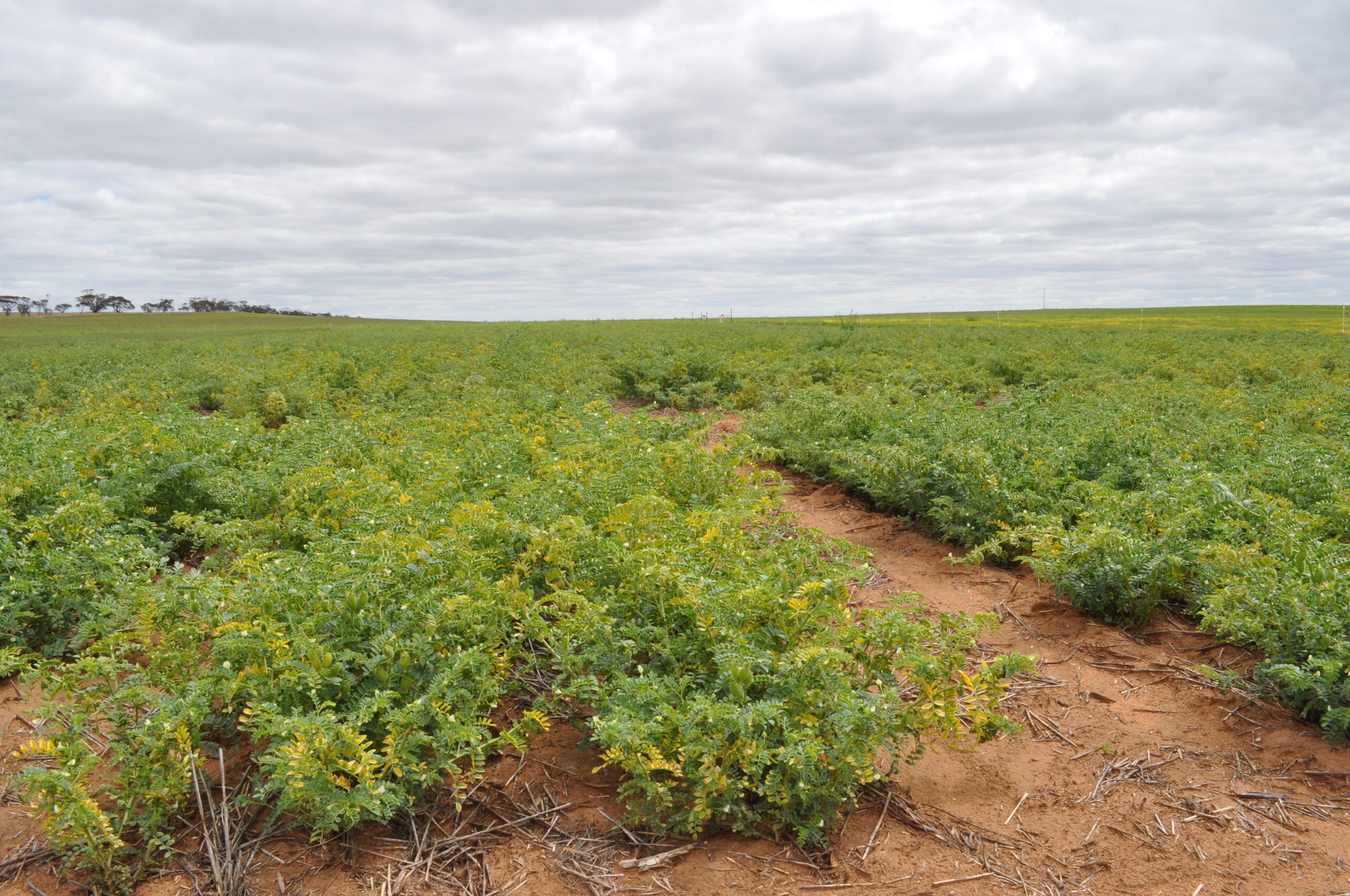
Viruses in Saskatchewan Pulse Crops
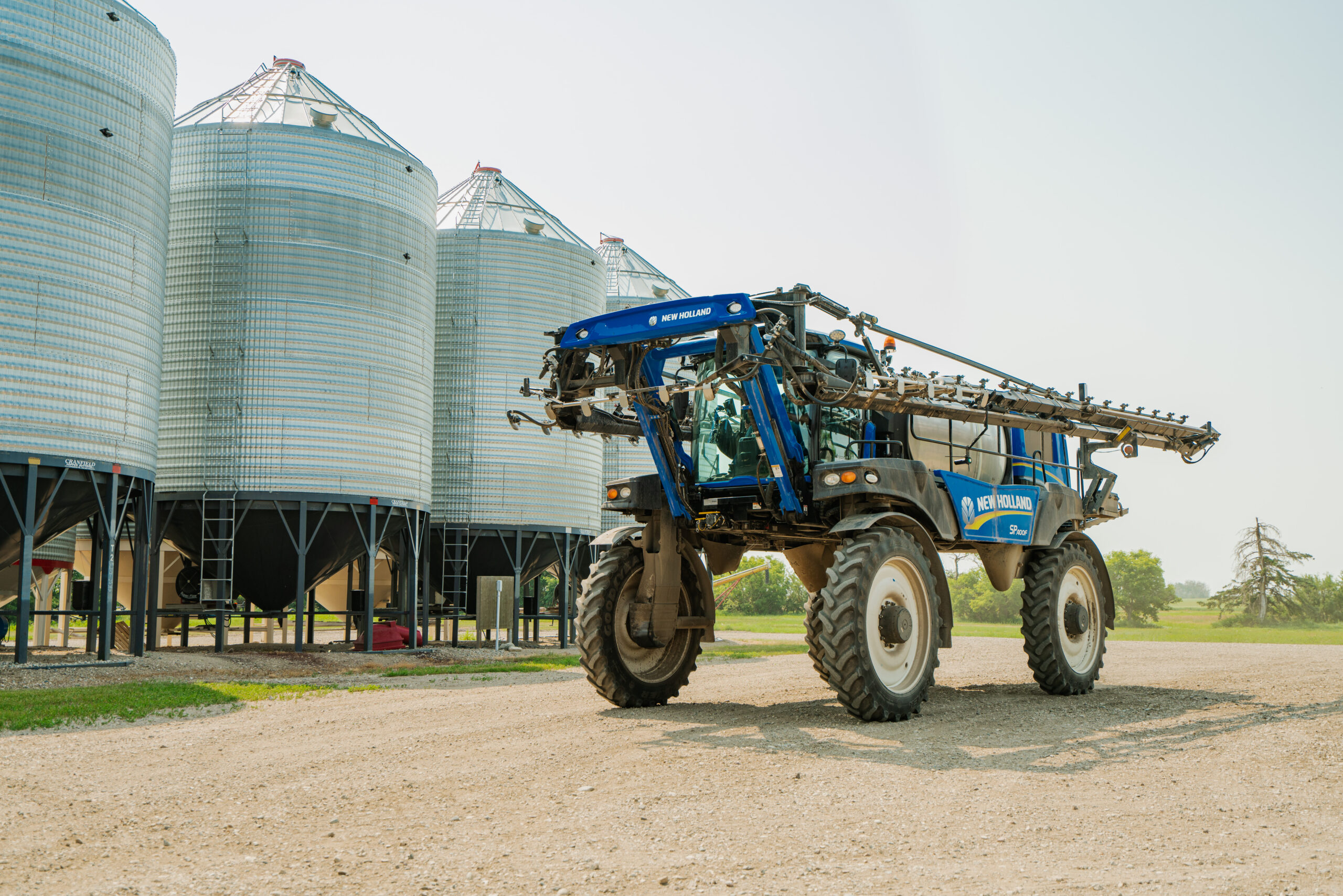
Fungicide Options for Pulse Crops

Fungicide Decision Support Checklist for Peas

Ascochyta Complex/Blight Management for Pea
Insect Management
Pea crops have few economically important insect pests; however, the few that can affect pea plants must be closely monitored to prevent yield loss.
The pea aphid can be a yield-threatening pest in Saskatchewan if environmental conditions are conducive. While the insect can overwinter on crop residue, most damage occurs when high populations are blown in from the south by the wind. Pea aphids cause crop damage by sucking plant sap, which damages and deforms the plants, potentially leading to plant death.
The economic threshold for pea aphid is two to three aphids per 8 inch (20 cm) plant tip, or nine to 12 aphids per 180° sweep of a 38 cm net, at flowering.
Pea leaf weevils cause the most serious damage during the larval stage, when they feed on nitrogen-fixing root nodules of pulse crops, most notably pea and faba bean. Adult weevils feed on pea seedlings, leaving scalloped or notched leaf margins.
Since adult weevils are difficult to spot, the economic threshold for pea leaf weevil is based on leaf damage. The threshold for insecticide application is one notch per three clam leaf pairs (the most recently emerged leaves), or one-third of plants exhibiting feeding damage before the sixth node stage of crop growth.
Cutworms can cause damage to newly emerged pea seedlings, and at times may require insecticide application. Below-ground feeding cutworms (pale western and red-backed cutworms) cut plants off at or near the soil surface. Foliar feeding cutworms (dingy and army cutworms) feed above-ground, consuming the plant foliage. Pea crops can often recover from cutworm damage if cool, moist growing conditions occur. However, plants are set back and may be less competitive.
Fields should be monitored from late May to late June. The economic threshold for cutworms is two to three per square metre (0.2 to 0.3/ft2) in the top 7.5 cm (three inches) of soil.
Insecticides that are currently registered for the control of cutworms are listed in the Guide to Crop Protection. The best control, when using an insecticide with a contact mode of action, is achieved by applying it in the evening, as cutworms have nocturnal feeding habits.
Peas are not a preferred food source for grasshoppers, but they will feed on pea plants if no other food source is available. Damage is most likely to be seen along ditches and road allowances. Usually, grasshopper infestations of 10/m2 and less do not cause economic losses in peas. Insecticides are registered for the control of grasshoppers in peas.
This insect tends to be more abundant in moist soils and lower, damper areas of a field. They are the immature stage or larvae of click beetles. Although wireworms prefer grassy plants (cereal crops), wireworm damage has been noted in other crops, including canola, chickpeas, and potatoes. Wireworms shred the plant tissue below the soil surface. Initially, symptoms may appear as wilting in the central leaves of the main stem, but can eventually lead to the plant’s death. Damage may not be noticed early enough in the season to allow for reseeding. There is no established economic threshold for wireworm in peas, and no in-crop insecticides are available to control wireworm. Controlling wireworm requires the use of insecticidal seed treatment.
